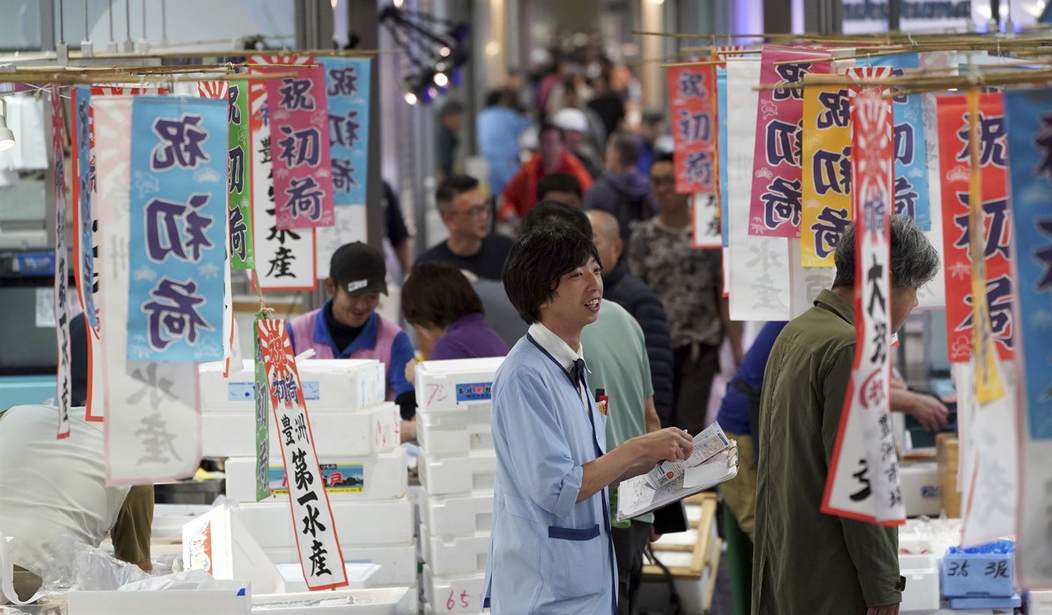Housing in big cities can be a complicated problem. Some cities, of course, handle it better than others. So let’s compare two cities with different approaches: San Francisco and Tokyo, two cities with long histories that face each other across the Pacific.
I’m generally not a fan of big cities. I grew up in rural and small-town environments, and the hustle and bustle of big metropolitan areas has never appealed to me. But even so, I love Japan, and I love Tokyo. I like being out in the countryside and in the small towns in Japan more than being in Tokyo, of course, but on several trips my wife and I have made to the Land of the Rising Sun, we stayed in the Tokyo metro area the entire time and had a ball.
That said, I can’t stand most major American cities. Detroit and Chicago are practically war zones, Los Angeles is a quagmire, I really can’t abide the nutbar Bay Area, and in the year I spent working in the area, I came to downright loathe San Francisco.

Let’s do a little comparison between Tokyo and San Francisco, then. What’s the difference between these two cities? Why is San Francisco now a literal garbage dump, littered with human feces, used needles, and derelicts sleeping in doorways? Why is Tokyo a clean, prosperous city where young people from all over Japan want to come live and work?
A major part of it is housing. The Tokyo suburb we favor staying in when we visit Japan is called Kinshicho, in Sumida Ward, which is a great place because it’s on the train line to everywhere. Like many of Tokyo’s neighborhoods, it has a fair number of high-rise apartment buildings. In our travels around Tokyo and indeed other places in Japan, we’ve seen a lot of these and more going up. In other words, Japan deals with a population density and housing cost issue that America cities can’t imagine, and they do it by vertical filing.
Why can’t American cities do this? Why can’t the Bay Area, a place notorious for horrifying housing prices, build some similar high-rise developments to provide affordable housing? “Affordable Housing” is a shibboleth of the political Left, which has a hammerlock on this city; why then do they insist on restrictive land-use and building codes that make this almost impossible?
“But wait a minute,” some of these same left-leaning folks might say, “we shouldn’t force people to live in massive high-rises!” Well, sure, I quite agree. But why not open the possibilities for developers to build some of these efficient, small-apartment high-rises and see if people might choose to live in them? You know – like a free country might?
Housing, like any other commodity, conforms to the laws of supply and demand, after all, and if cities permitted building more high-rise structures, that would greatly increase the amount of housing for the footprint used, which should lower prices. There are some signs that this is starting to happen, but it should have started decades ago; given the ongoing disintegration of the city, it may be too late.
A big part of the difference in these two areas is also cultural. Japan is a nation of 120 million on an island archipelago with about the land area of California. But while in the United State people are fleeing the disintegrating big cities, Japanese youth are instead moving from outlying areas into the big cities like Tokyo, Osaka, Kyoto and smaller, regional cities like Sendai and Fukuoka, to the point where rural Japanese real estate is starting to drop in price.
There are other cultural issues that we have here in the United States that Japan simply doesn’t, and those add a lot to the appeal of cities like Tokyo. Japan is a racially and culturally homogeneous nation, unlike (let’s say this softly) many areas in the United States. That, and Japan’s cultural values of respect and courtesy, makes life much more tolerable and less stressful in a place where you spend a lot of time literally rubbing elbows with other people. But here in the United States, racial tensions are increasing, and according to the Department of Justice, certain ethnic and cultural groups are responsible for a disproportionate amount of crime.
Meanwhile, in San Francisco, the municipal government has taken tolerance to a ridiculous degree. They have liberal District Attorneys who refuse to prosecute criminals so that crime runs rampant; their idea of compassion for the homeless is to facilitate their taking over the sidewalks of the city to use as they please, as public restrooms, as open-air drug bazaars, or as sleeping space.
I love visiting Japan. I love the food, the people, the culture, and the nightlife. I’m too indelibly a red-state American to ever want to live there permanently, and the Japanese put up with a level of government control that most Americans would find repressive. But even so, the contrasts between Japanese cities and American ones couldn’t be starker.
Tokyo isn’t a perfect place. The cost of living is still high, although not so high as San Francisco. The last time I was in Tokyo, I noted that you’re starting to see little acts of hooliganism like graffiti, which you never saw just a few years ago. But Tokyo also houses several orders of magnitude more human beings than live in the Bay Area and manages to find ways that young folks starting out can afford to live there. And Tokyo is a clean city. You rarely see discarded trash in the streets, much less spent needles and human feces.
But visit San Francisco — or Chicago, Baltimore, or St. Louis — today, and see how things stand there.
We can’t, of course, magically transform America’s ethnic and cultural makeup to one more nearly resembling Japan. That’s just not in the cards. But we can transform a lot of the practices we use in managing our major cities, not only in crime control but in (actually) affordable housing and generally in keeping public order. These are things at which the Japanese are, candidly, kicking our butts.
We could learn a thing or two from them,













